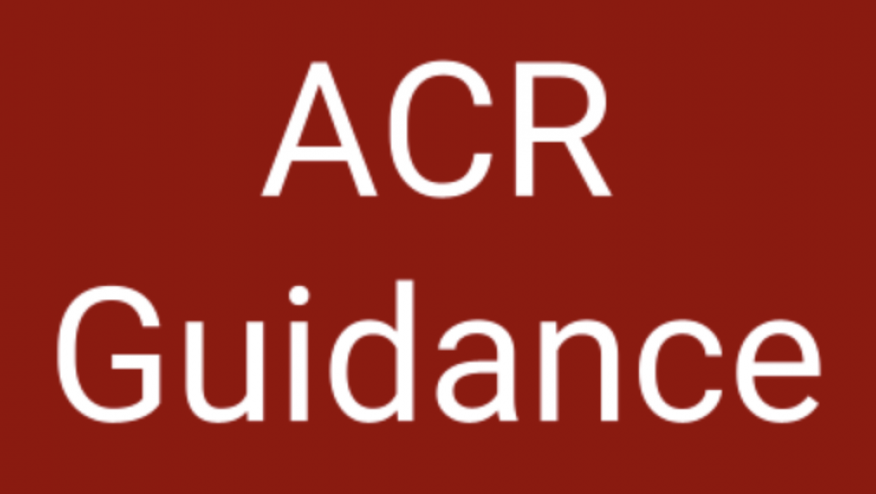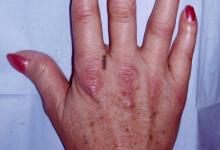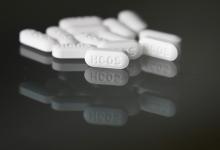New ACR 2025 Guidelines for Non-Renal Lupus Save

Key Takeaways
- This guideline from the American College of Rheumatology reinforces the prevailing belief that hydroxychloroquine (HCQ) should be the backbone of lupus treatment for most patients.
- Corticosteroids may be used to bring active disease under control, but they should be tapered and withdrawn as soon as possible.
Additional medications such as immunosuppressants and/or targeted biologic agents may be considered to achieve remission or low-activity status. - Long-awaited updates to the American College of Rheumatology's (ACR) guideline on systemic lupus erythematosus (SLE) management make clear that hydroxychloroquine (HCQ) should be the centerpiece of treatment for most patients, with other medication classes added as needed to reach low disease activity (LDA) or remission.
Written by Lisa Sammaritano, MD, of the Hospital for Special Surgery in New York City, and a committee of nearly 50 other experts, the new guideline also stipulates that corticosteroids are OK for gaining symptom control in newly diagnosed patients and when flares erupt, but the duration should be kept as short as possible.
The guideline was published this week in the ACR's flagship journal, Arthritis & Rheumatology, and also in a sister publication, Arthritis Care & Research.
"Many recommendations are conditional and do not specify one particular immunosuppressive agent, or even one class of agent," the panel noted. "This is a direct result of the limited evidence available, variations in treatment approach among the Voting Panel members, and the high value Patient Panelists placed on the impact of side effects and tolerability for any given therapy."
This led, in turn, to an emphasis on shared decision-making, "which yields the added benefit of enhancing medication adherence, an important goal since this ultimately is a critical determinant of any therapy's effectiveness," the group wrote. Research has shown that poor adherence is rampant among lupus patients, even for relatively easy-to-take drugs like HCQ.
It may seem incredible, but the new guidance represents the ACR's first update since 1999. At that time, the only medications the group felt comfortable recommending were antimalarials such as HCQ, non-steroidal anti-inflammatory drugs, steroids (topical and oral), and immunosuppressants such as azathioprine and methotrexate. Biologic agents were just starting to appear on the horizon, and the 1999 guideline characterized them as "experimental."
Rheumatologists weren't entirely left in the lurch during the last quarter-century. The ACR's transatlantic counterpart, the European Alliance of Associations for Rheumatology (EULAR), issued its most recent guideline in 2023, which allowed it to cover most recent advances in research and drug development. It, too, gives primacy to HCQ as the therapy backbone, with old-line immunosuppressants and newer targeted drugs added in when needed to improve symptom control.
The new ACR guideline now lists 20 different drugs with dosing and monitoring instructions. The roster includes five biologics: anakinra (Kineret), anifrolumab (Saphnelo), belimumab (Benlysta), obinutuzumab (Gazyva), and rituximab (Rituxan), although not all of these sport a formal FDA-approved indication in SLE. Also listed are ultrapotent immunosuppressants such as cyclosporine and tacrolimus, other antimalarials besides HCQ, and even the leprosy drug dapsone (useful for some mucocutaneous symptoms). Numerous other drugs also get some level of endorsement in the guideline for specific organ manifestations.
General guidance on medications included these recommendations:
- Remission or LDA should be the goal of treatment
- Patients unable to maintain at least LDA with steroid doses ≤5 mg/day in prednisone equivalents should have immunosuppressants started or escalated
- HCQ should continue indefinitely as long as it is adequately tolerated
- Try tapering and withdrawing immunosuppressants for patients who have been in remission or low disease-activity status for 3-5 years
Sammaritano and colleagues did not develop a more detailed treatment algorithm to guide step therapy -- an impossible task, given the wide range of possible SLE symptoms and the fact that many commonly used drugs target just one organ system. In place of that, the panel provided a graphic organized by symptom type (e.g., mucocutaneous, hematologic, neuropsychiatric) listing the various drugs that could be considered. So, for patients with "chilblain" lupus, drugs such as calcium channel blockers, phosphodiesterase-5 inhibitors, or pentoxifylline are the options. Myocarditis, meanwhile, calls for treatments such as cyclophosphamide, mycophenolate, B-cell depleting agents such as rituximab, or intravenous immunoglobulin.
Other than HCQ, notably, no individual drug got a "strong recommendation for" its use for any particular symptom class or in SLE generally. Given that all other recommendations were conditional, the panel called for "[c]omparative effectiveness trials within specific organ systems, in addition to well-designed observational and cohort studies."










If you are a health practitioner, you may Login/Register to comment.
Due to the nature of these comment forums, only health practitioners are allowed to comment at this time.